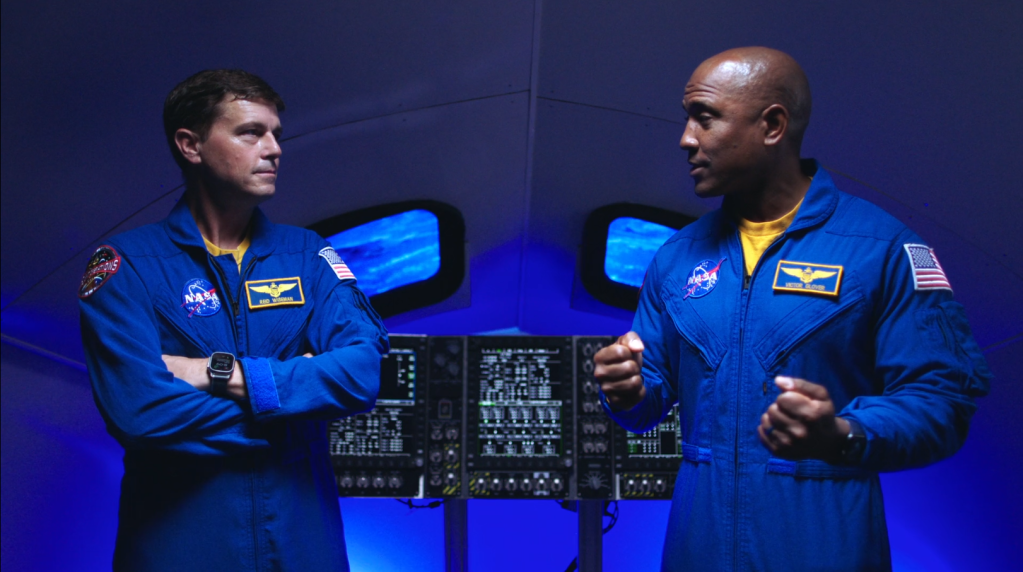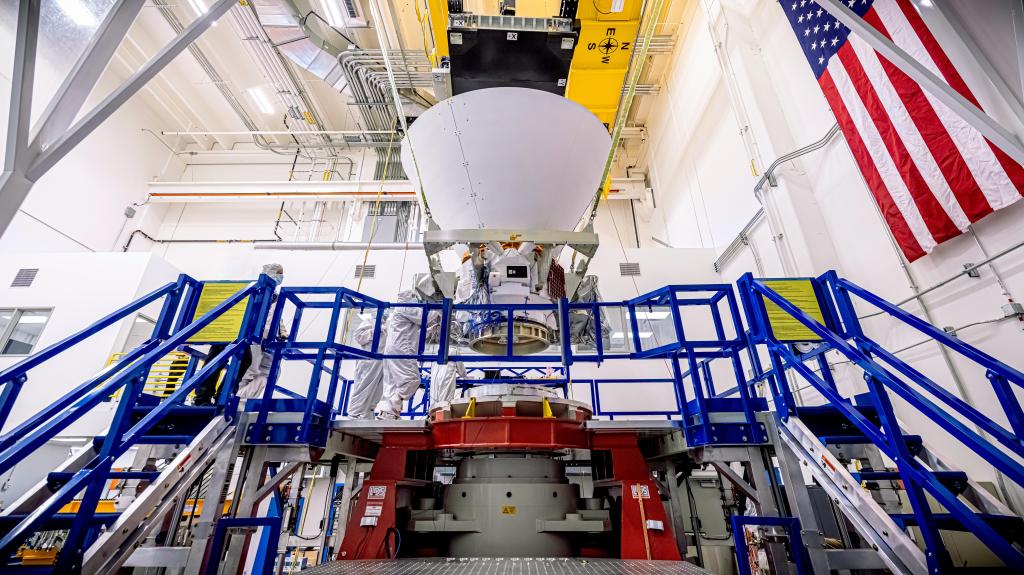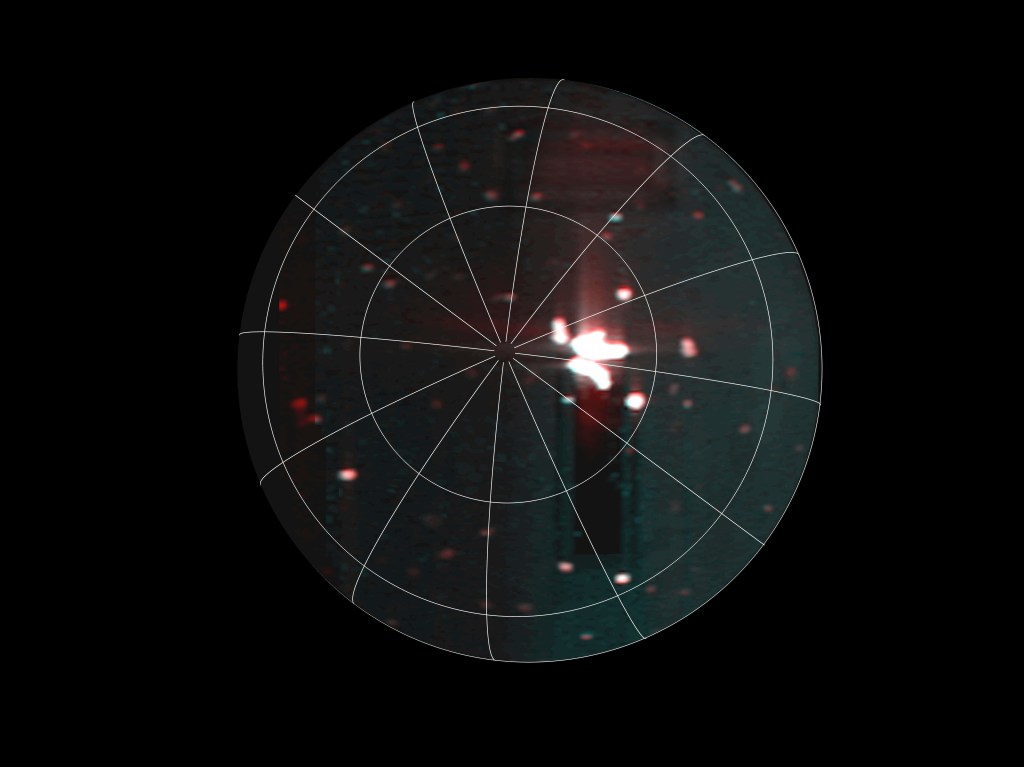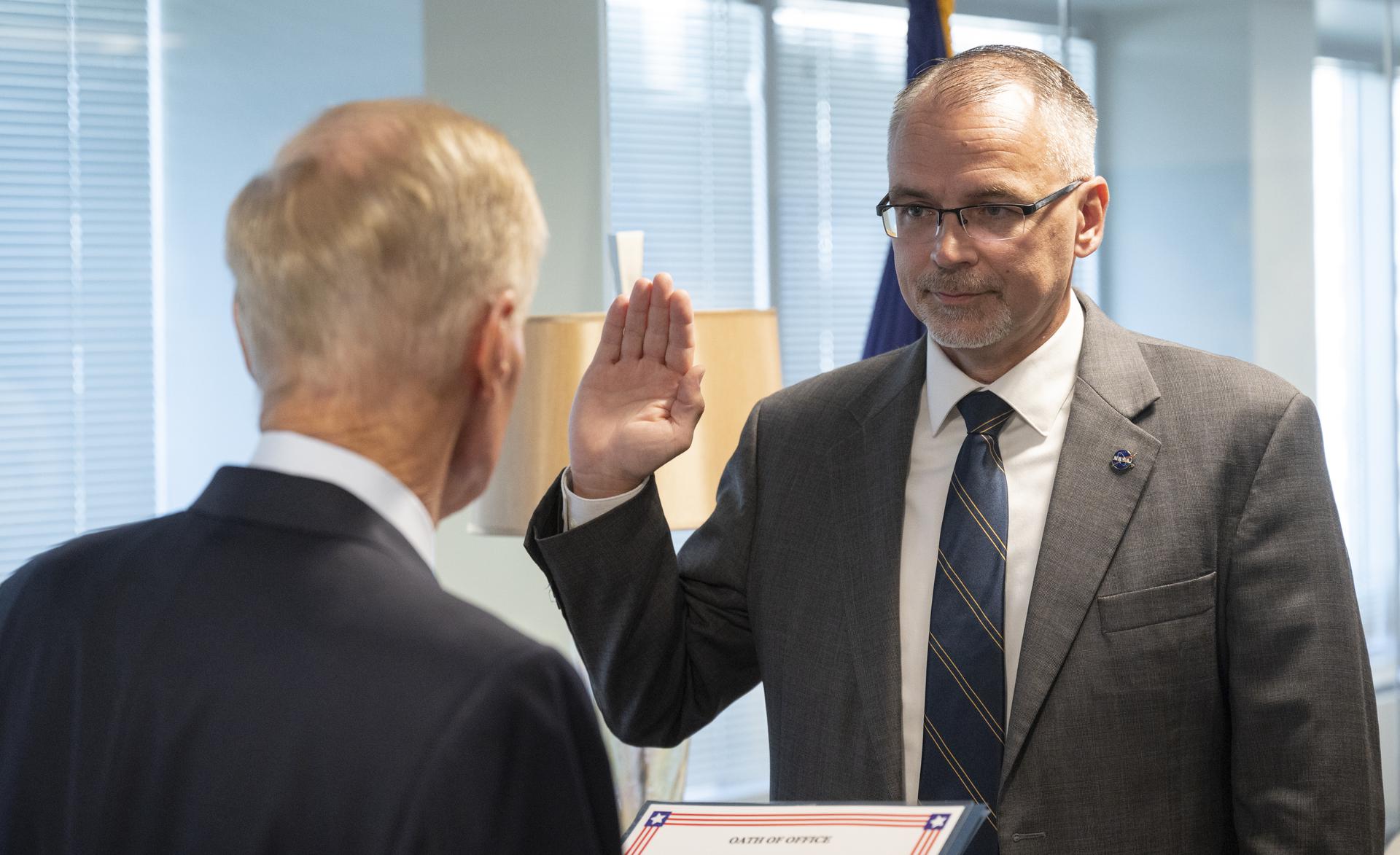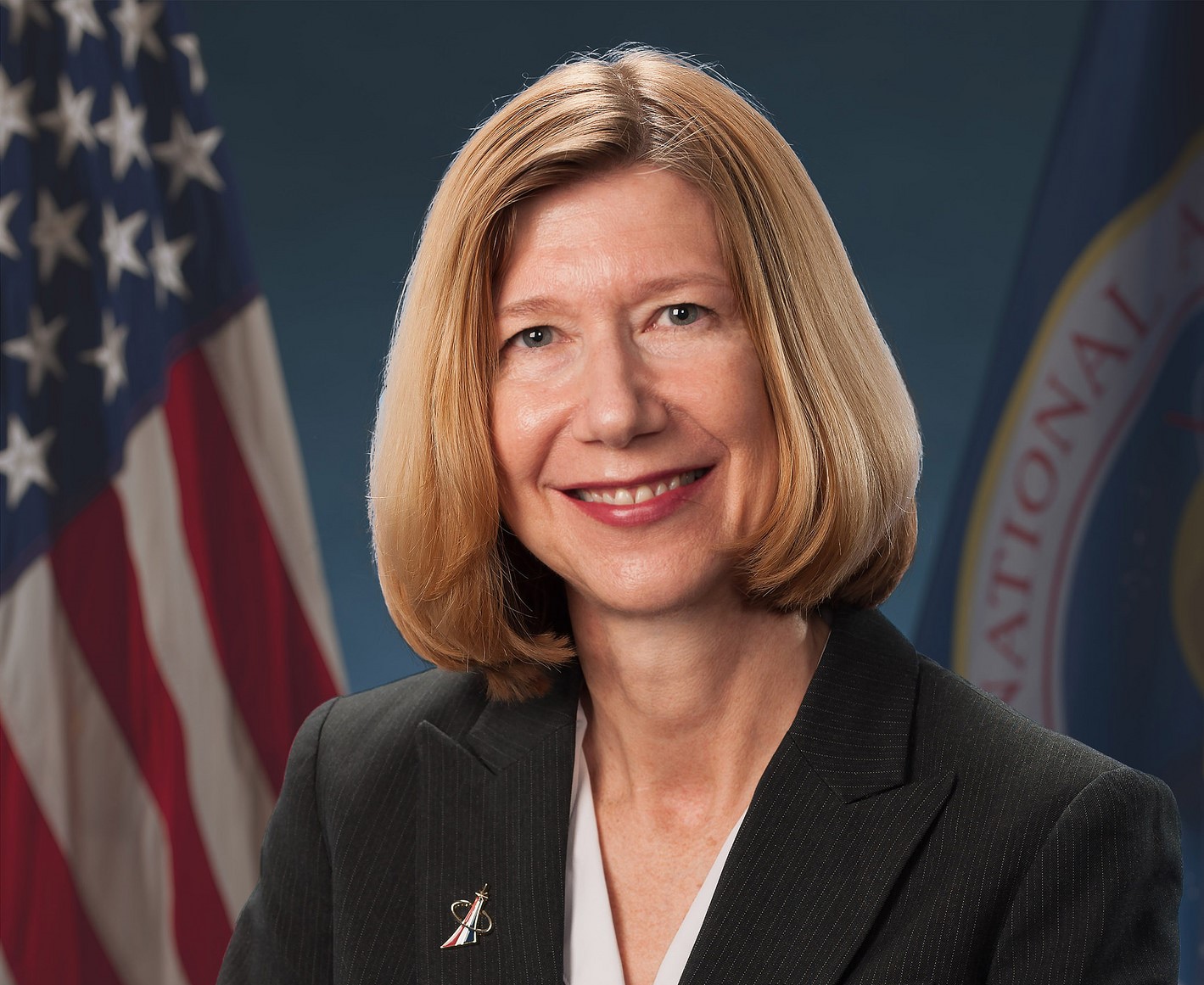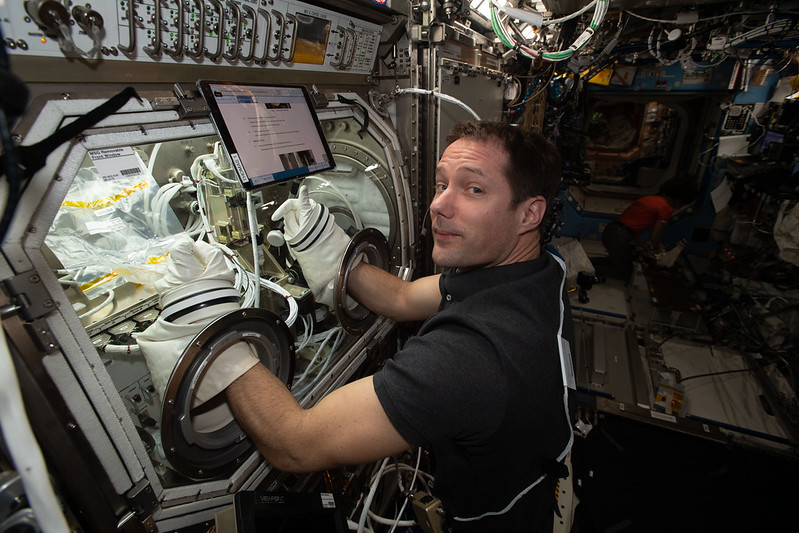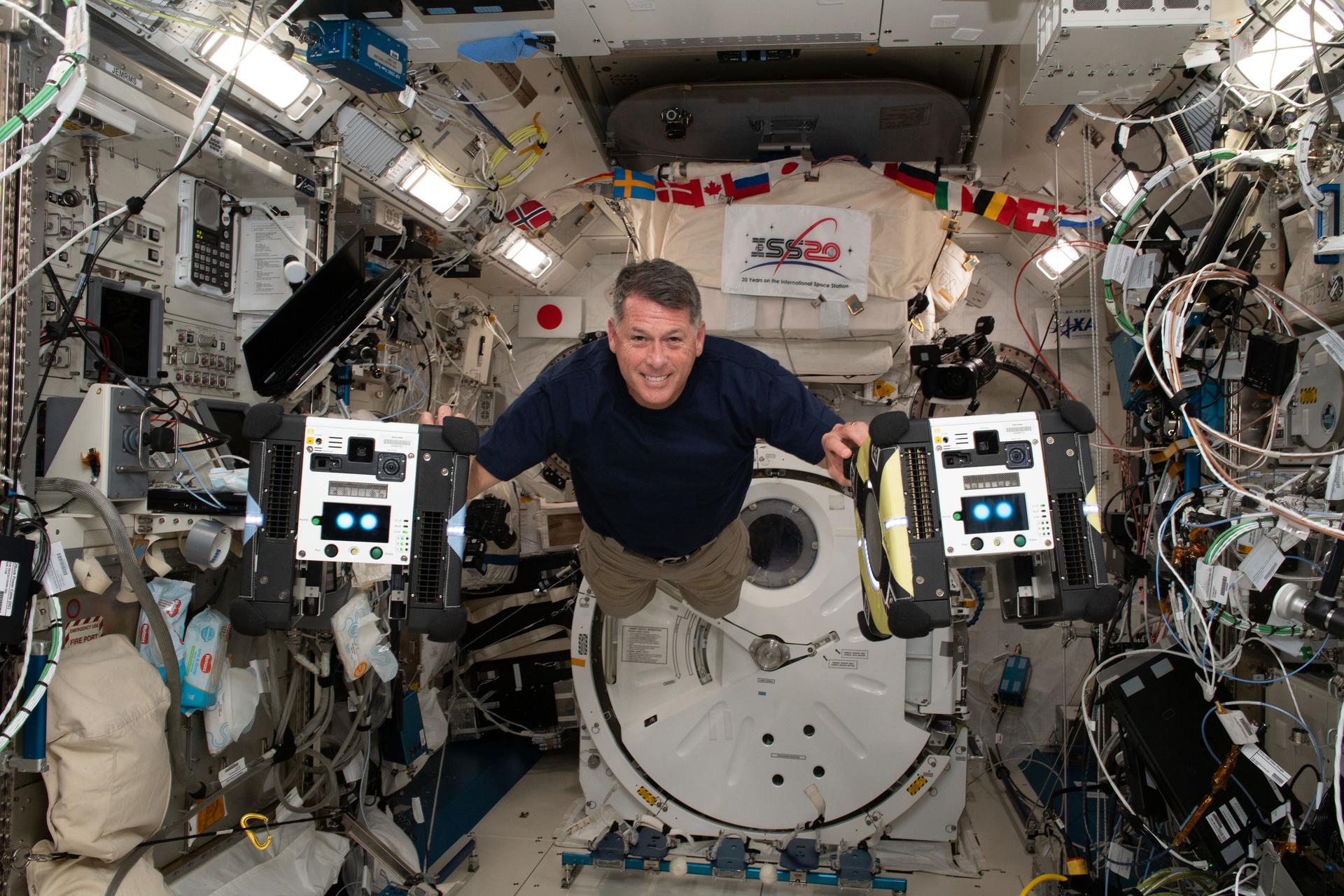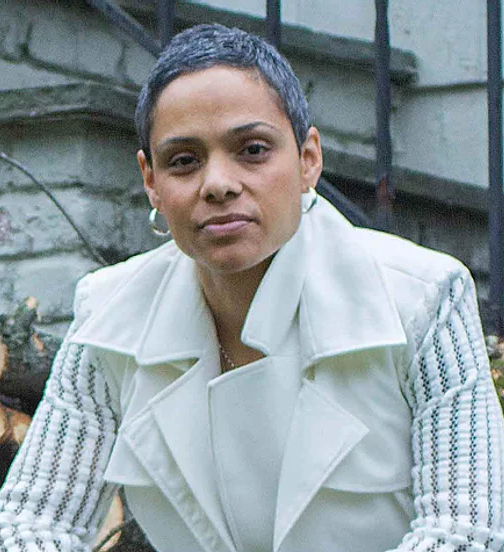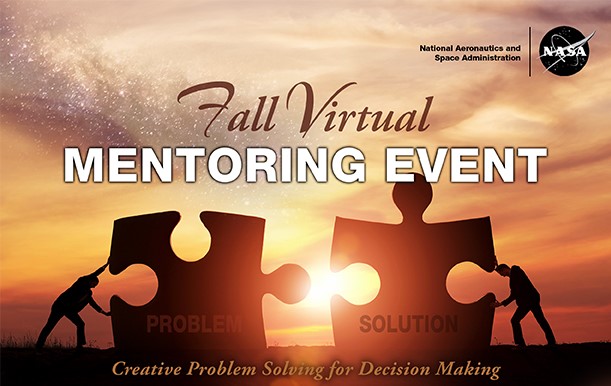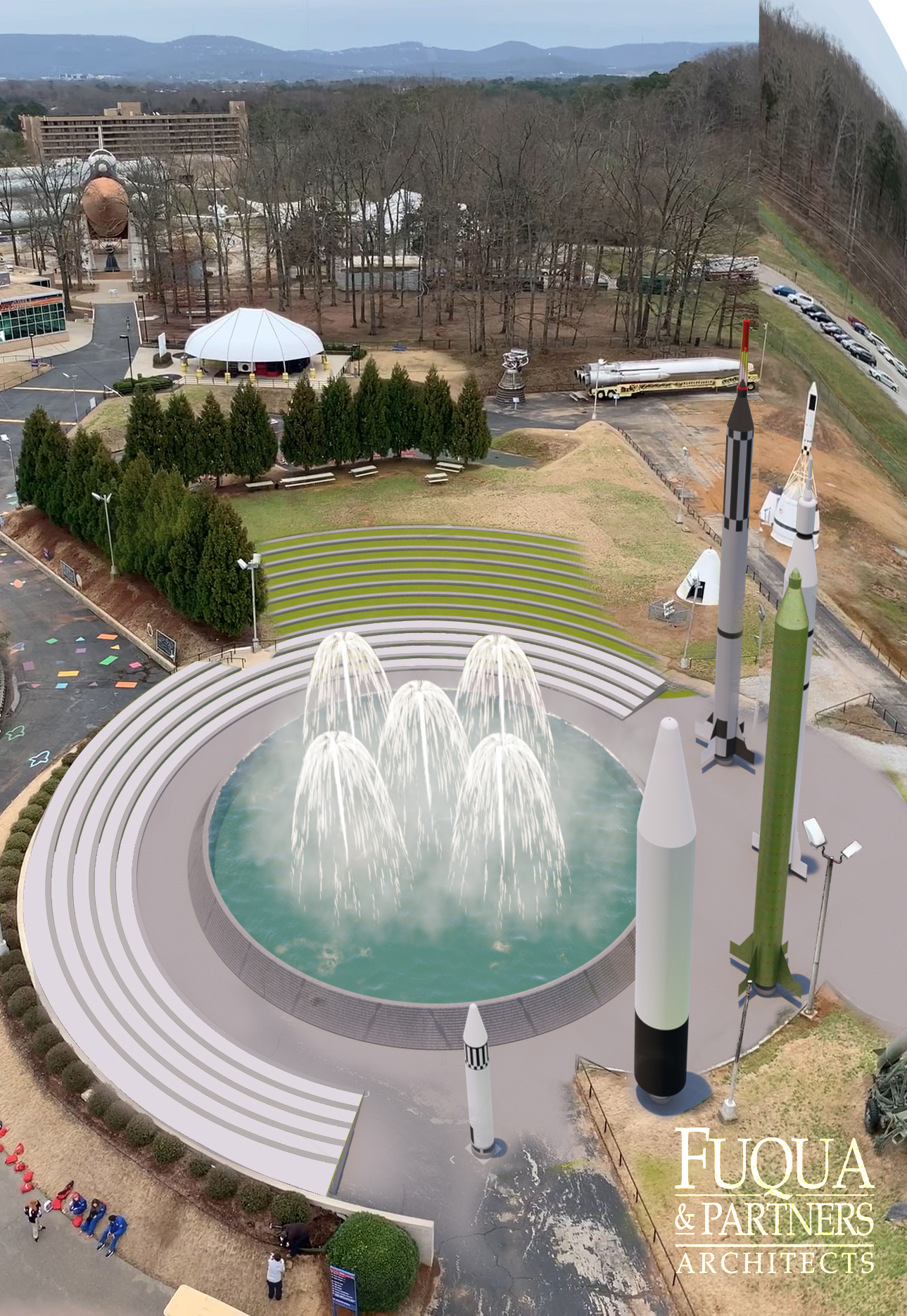NASA Leadership Positions Agency for Future
NASA Administrator Sen. Bill Nelson announced Sept. 21 that the agency is creating two new mission directorates that will best position the agency for the next 20 years.
The move separates the agency’s current Human Exploration and Operations Mission Directorate into the new Exploration Systems Development Mission Directorate (ESDMD) and Space Operations Mission Directorate.
NASA is making the changes because of increasing space operations in low-Earth orbit and development programs well underway for deep space exploration, including Artemis missions.
Both mission directorates are engineering the future of NASA’s Moon to Mars exploration approach from different ends of the spaceflight continuum.
“NASA has long set the vision for space exploration, not only for our nation, but also for the world,” Nelson said. “This reorganization positions NASA and the United States for success as we venture farther out into the cosmos than ever before, all while supporting the continued commercialization of space and research on the International Space Station. This also will allow the United States to maintain its leadership in space for decades to come.”
Jim Free will return to the agency as associate administrator of ESDMD. The new directorate will define and manage systems development for programs critical to Artemis and plan the Moon to Mars exploration approach in an integrated manner.
“I’m excited to be back at NASA,” Free said. “Working hand-in-hand with our colleagues in Space Operations, we will focus on ensuring the success of Artemis missions in the near term while charting a clearly defined path for human exploration of Mars as our horizon goal.”
Kathy Lueders will serve as associate administrator of the agency’s new Space Operations Mission Directorate. This directorate will focus on launch and space operations, including the space station, the commercialization of low-Earth orbit, and eventually, sustaining operations on and around the Moon.
“The space station is the cornerstone of our human spaceflight efforts, and the commercial crew and cargo systems that support the microgravity laboratory are the building blocks to our continued success,” Lueders said. “We’ll work closely across mission directorates to achieve even greater successes to come, including expanding the low-Earth orbit economy, launching our state-of-the-art science missions, and getting ready for future operations at the Moon and Mars.”
Creating two separate mission directorates will ensure these critical areas have focused oversight teams in place to support and execute for mission success. This approach with two areas focused on human spaceflight allows one mission directorate to operate in space while the other builds future space systems, so there is a constant cycle of development and operations to advance NASA’s goals in space exploration.
“Kathy has demonstrated exceptional leadership and overseen tremendous progress in her role as the associate administrator for human spaceflight. And we’re thrilled to welcome Jim back to the agency. Together, this dynamic duo will help forge the future of human exploration,” Nelson said.
Over the next few months, NASA will implement these new mission directorates while remaining focused on safety of ongoing operations for commercial crew and upcoming Artemis missions.
There are no changes to NASA center roles and missions as a part of this reorganization.
Inside the Brains of NASA’s Moon Rocket
NASA teams across the country are preparing for the Artemis I launch to the Moon. When NASA’s mighty Space Launch System rocket launches to the Moon from the agency’s Kennedy Space Center, its four RS-25 engines and two solid rocket boosters will produce more than 8.8 million pounds of thrust. The rocket’s flight software and avionics systems act as the brains behind that muscle to guide and steer the rocket beyond Earth’s orbit. Watch to learn more about the SLS rocket’s flight software and avionics systems, then learn more about SLS and Artemis, here. (NASA)
Ring-Sheared Drop Experiment in Use Aboard Space Station
Astronaut Thomas Pesquet of the European Space Agency works on the ring-sheared drop experiment inside the U.S. Destiny laboratory module’s Microgravity Science Glovebox aboard the International Space Station. The experiment studies the formation of potentially destructive amyloid fibrils, or protein clusters, like those found in the brain tissue of patients battling neurodegenerative diseases – such as Alzheimer’s and Parkinson’s. The experiment launched to the space station on Northrop Grumman’s 16th commercial resupply services mission Aug. 10. The ring-sheared drop payload initially launched to the space station in 2019, but the hardware needed modifications to achieve the desired results. A team at NASA’s Marshall Space Flight Center worked to improve the efficacy of the experiment by making necessary adjustments. That included completing two parabolic flights In April to test modifications. (NASA)
Jingle, Pluck, Hum: Sounds from Space
Space is mostly quiet. Data collected by telescopes is most often turned into silent charts, plots, and images. A “sonification” project led by NASA’s Chandra X-ray Observatory and NASA’s Universe of Learning program transforms otherwise inaudible data from some of the world’s most powerful telescopes into sound. This effort makes it possible to experience data from cosmic sources with a different sense: hearing.
The latest installment of this sonification project features a region where stars are forming (Westerlund 2), the debris field left behind by an exploded star (Tycho’s supernova remnant), and the region around arguably the most famous black hole (Messier 87). Each sonification has its own technique to translate the astronomical data into sounds that humans can hear.
The data sonification project is led by the Chandra X-ray Center with NASA’s Universe of Learning program. NASA’s Science Activation program strives to enable NASA science experts and to incorporate NASA science content into the learning environment effectively and efficiently for learners of all ages. The collaboration was driven by visualization scientist Dr. Kimberly Arcand of the Chandra X-ray Center and astrophysicist Dr. Matt Russo with musician Andrew Santaguida (both of the SYSTEM Sounds project).
NASA’s Marshall Space Flight Center manages the Chandra program. The Smithsonian Astrophysical Observatory’s Chandra X-ray Center controls science from Cambridge, Massachusetts, and flight operations from Burlington, Massachusetts.
This is a cluster of young stars – about 1 to 2 million years old – located about 20,000 light-years from Earth. In its visual image form, data from NASA’s Hubble Space Telescope (green and blue) reveals thick clouds where stars are forming, while X-rays seen from Chandra (purple) penetrate through that haze. In the sonified version of this data, sounds sweep from left to right across the field of view with brighter light producing louder sound. The pitch of the notes indicates the vertical position of the sources in the image with the higher pitches towards the top of the image. The Hubble data is played by strings, either plucked for individual stars or bowed for diffuse clouds. Chandra’s X-ray data is represented by bells, and the more diffuse X-ray light is played by more sustained tones. (NASA/CXC/SAO/K.Arcand, SYSTEM Sounds (M. Russo, A. Santaguida)
Beginning in the center, the sonification of the Tycho supernova remnant expands outward in a circle. The image contains X-ray data from Chandra where the various colors represent small bands of frequency that are associated with different elements that are moving both toward and away from Earth. For example, red shows iron, green is silicon, and blue represents sulfur. The sonification aligns with those colors as the redder light produces the lowest notes and blue and violet create the higher-pitched notes. Color varies over the remnant, but the lowest and highest notes (red and blue) dominate near the center and are joined by other colors (midrange notes) towards the edge of the remnant. White corresponds to the full range of frequencies of light observable by Chandra, which is strongest toward the edge of the remnant. This light is converted to sound in a more direct way as well, by interpreting frequencies of light as frequencies of sound and then shifting them lower by 50 octaves so that they fall within the human hearing range. The different proportions of iron, silicon, and sulfur across the remnant can be heard in the changing amounts of the low-, mid-, and high-frequency peaks in the sound. The field of stars in the image as observed by Hubble is played as notes on a harp with the pitch determined by their color. (NASA/CXC/SAO/K.Arcand, SYSTEM Sounds (M. Russo, A. Santaguida)
The giant black hole in Messier 87 (M87 for short) and its surroundings have been studied for many years and by a range of telescopes including Chandra (blue) and the Very Large Array (red and orange). This data shows that the black hole in M87 is sending out massive jets of energetic particles that interact with vast clouds of hot gas that surround it. To translate the X-rays and radio waves into sound, the image is scanned beginning at the 3 o’clock position and sweeping clockwise like a radar. Light farther from the center is heard as higher pitched while brighter light is louder. The radio data is lower pitched than the X-rays, corresponding to their frequency ranges in the electromagnetic spectrum. The point-like sources in X-ray light, most of which represent stars in orbit around a black hole or neutron star, are played as short, plucked sounds. (NASA/CXC/SAO/K.Arcand, SYSTEM Sounds (M. Russo, A. Santaguida)
Space Station Crew Works with Space Biology, Robotics
Expedition 65 kicked off the week with a host of space biology and robotics activities aboard the International Space Station on Sept. 20.
Five astronauts out of the seven who comprise the space station crew gathered for a review of upcoming research operations with rodents. The quintet reviewed roles and procedures for the study to learn how microgravity affects normal skin and healing functions. The astronauts will take turns transferring the mice from the Mouse Habitat Unit to the Life Science Glovebox for observation.
Full-fledged operations for the Rodent Research-1 Demonstration began Sept. 21 and will continue before the SpaceX Cargo Dragon returns to Earth with the rodents Sept. 30. NASA Flight Engineers Megan McArthur and Shane Kimbrough traded shifts Sept. 21 with Commander Akihiko Hoshide of the Japan Aerospace Exploration Agency and Flight Engineer Thomas Pesquet of European Space Agency. NASA Flight Engineer Mark Vande Hei will also contribute to the experiment.
“Here at Marshall, the Microgravity and Life Sciences Glovebox team participates in the integration of numerous biological payloads into the Life Sciences Glovebox,” said Chris Butler, Microgravity Life Sciences Glovebox Facility Payload Integration manager. “The Glovebox provides two levels of containment for biological materials that could be harmful to the astronauts and protects the biological sample from outside contaminants.”
On Sept. 20, Kimbrough started the day by checking out and activating the toaster-sized Astrobee robotic fee-flyers in cooperation with engineers on the ground. Hoshide began his day extracting DNA from microbe samples for sequencing to understand the microbial environment of the station. McArthur replaced fuel bottles inside the Combustion Integrated Rack. Pesquet set up student-controlled Earth observation hardware then cleaned up debris to support the Plant Habitat-04 space crop experiment.
The Payload Operations Integration Center at NASA’s Marshall Space Flight Center oversees all experiments and science communications aboard the space station.
Cosmonauts Oleg Novitskiy and Pyotr Dubrov are continuing to set up hardware, including cables and laptop computers, inside the Nauka multipurpose laboratory module. The new gear will enable the crew to control the European Robotic Arm from both inside and outside the station. The duo then split up the afternoon of Sept. 20 for Russian communications work and life support maintenance.
Rutgers’ Marta Esquilin to Headline Marshall Hispanic Heritage Month Event
NASA’s Marshall Space Flight Center’s virtual Hispanic Heritage Month event is set for Sept. 29 at 10 a.m. on Microsoft Teams.
The guest speaker will be Marta Esquilin, associate dean of the Honors Living Learning Community at Rutgers University in Newark, New Jersey. She is also assistant professor of Professional Practice in the American Studies Program within the Faculty of Arts and Sciences.
Esquilin’s address is titled “There’s Nothing Micro About It.” She has long raised awareness about how microaggressions operate to create hostile environments for people with marginalized social identities within work and school settings. Esquilin has developed trainings and assessment tools aimed at increasing cultural competence, addressing the impacts of implicit bias and microaggressions, and creating sustainable infrastructures to support student success within educational settings.
Join the program here.
The national theme for this year’s heritage events is “Esperanza: A Celebration of Hispanic Heritage and Hope.” NASA’s virtual agencywide event Oct. 7 at noon will spotlight the creation of the new Smithsonian National Museum of the American Latino. Dr. Ellen Stofan, undersecretary for Science and Research at the Smithsonian Institution, will join NASA representatives to discuss the relationship between the agency and the Smithsonian, and how NASA’s impact will be featured in the new museum. The program will air on NASA TV, and be live streamed on NASA’s Twitter, YouTube, and Facebook accounts.
National Hispanic Heritage Month runs from Sept. 15 to Oct. 15 each year, honoring the contributions of Hispanic and Latino Americans throughout the nation’s history, and celebrating their diverse and impactful heritage and culture. The month-long commemoration was enacted into law in 1988.
Marshall to Host Fall Virtual Mentoring Event: ‘Creative Problem-Solving for Decision Making’
NASA’s Marshall Space Flight Center will host a virtual mentoring event – titled “Creative Problem-Solving for Decision Making” – on Sept 30, featuring presentations from Marshall leaders and mentoring program advocates. The event is scheduled for 8:30 a.m. to 1 p.m. and is geared toward developing problem-solving skills in this ever-evolving world while giving attendees ideas for building decision-making skills. Keynote speakers will include Connell Maynor, head football coach at Alabama A&M University; Johnny Stephenson, deputy associate administrator of NASA’s Office of Communications; and Katherine Van Hooser, Marshall’s chief engineer. Microsoft Teams breakout rooms will be used to connect in small group settings. Rick Burt, Marshall deputy director, will open and close the event. “We all need these problem-solving and decision-making skills in our daily lives,” Burt said. “Whether it’s at work building rockets, coaching football, or sacking groceries, we have to solve problems, and we have to make decisions. Learning about that, in a structured way, can help us in our careers as well as our everyday lives.” To register, visit SATERN and search “Creative Problem-Solving for Decision Making.” Attendees can ask questions for the group mentoring in advance, here. Contact Cassandra Gideon or Sarah Triana for more information. (NASA)
Marshall Retirees Association Welcomes NASA Chief Scientist, Updates Huntsville Space Memorial Development
By Rick Smith
The Marshall Space Flight Center Retirees Association held its latest blended live and virtual luncheon presentation Sept. 14, unveiling its new Facebook presence and updating development of an elaborate memorial honoring the Marshall workers who contributed to more than 60 years of historic milestones in U.S. space exploration.
Dr. James Green, NASA’s chief scientist, delivered the keynote presentation for the quarterly association meeting, detailing NASA’s plans for human and robotic exploration of Mars in the coming decades, building on the impending Artemis Moon missions to prepare the way for long-term exploration of the red planet.
Green, who joined NASA in 1980, got his start in Marshall’s magnetospheric physics branch. “I learned so much, and it provided me with the opportunity to grow and to absorb whatever [new challenges] the agency could throw at me,” he told the luncheon audience. “Those jobs came fast and furious – and it’s still going on that way.”
The Retirees Association is keeping pace with that growth, said association president Rick Chappell, former chief scientist at Marshall. The organization has rolled out a new Facebook presence, Space Explorers Huntsville, to help inspire participation from the thousands of NASA workers and retirees across the Tennessee Valley and around the nation.
They’re working to erect the Space Exploration Memorial, a monument to be built at the U.S. Space & Rocket Center to honor the people and companies who spearheaded America’s space program in its infancy and have continued to play an integral role ever since.
“Huntsville’s part in space exploration is significant on the scale of world accomplishments,” Chappell said. But for so many who took part, he noted, “it never seemed like work. It was just an opportunity to do something nobody had ever done before. It’s about who we are.”
The new memorial will include engraved names of every Marshall civil servant since the field center opened in 1960, along with the names of participating industry firms and representations of some of the center’s most famous rockets and spacecraft, from the earliest Redstone rockets to the Saturn V, the space shuttle main engines, and the mighty RS-25 engines set to boost the Space Launch System to orbit.
Chappell encouraged association members and active team members at Marshall and the University of Alabama in Huntsville to direct retirees – both civil servants and contractors – to the online workforce database to verify their names and add biographical information to help support the memorial effort.
Currently, the database includes the names of some 22,000 current and former members of the Marshall workforce, and will help ensure the legacy of all those contributors as the new memorial takes shape.
The online database will be accessible at kiosks around the memorial, enabling visitors to look up the names of civil servants and companies and identify where they’re honored at the site. The database also will include the names of all known employees who supported Marshall contractors and partner companies. Organizers continue to work with the contractor community to obtain those names, past and present.
“The Retirees Association has given us the opportunity to come together to reflect on the spirit of teamwork and perseverance that put the first Americans on the Moon, helped launch the International Space Station, and soon will enable crewed journeys back to the Moon and on to Mars,” Chappell said. “We’re excited to share this monument with the entire Huntsville community and all those who visit the Rocket City.”
Smith, a Manufacturing Technical Solutions employee, supports Marshall’s Office of Strategic Analysis & Communications.




